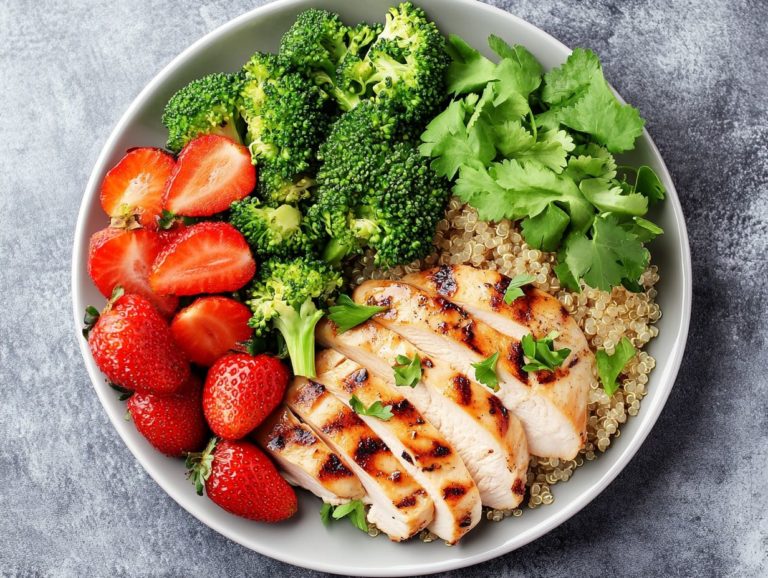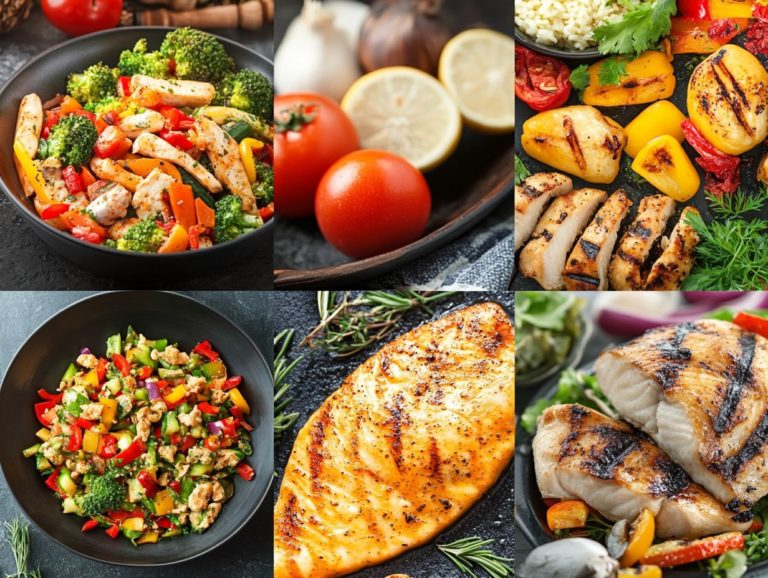5 Ways to Make Vegetables Taste Better
Eating vegetables can be a delightful experience! You don t have to feel like it’s a chore.
Here are five innovative ways to elevate your veggie game. You’ll discover how to select the freshest produce and prepare vegetables while keeping their nutrients intact.
We’ll tackle common cooking pitfalls and share fun methods to make veggies appealing for kids. Are you ready to transform your meals? Let s dive in!
Contents
- Key Takeaways:
- 1. Roast Them
- 2. Add Cheese or Cream Sauce
- 3. Incorporate Them into Your Favorite Dishes
- 4. Use Different Seasonings and Spices
- 5. Try Different Cooking Methods
- Why Is It Important to Eat Vegetables?
- What Are Some Tips for Picking the Best Vegetables?
- How Can Vegetables Be Prepared to Retain Their Nutritional Value?
- What Are Some Common Mistakes People Make When Cooking Vegetables?
- How Can One Make Vegetables More Appealing to Children?
- What Are Some Creative and Unique Ways to Incorporate Vegetables into Meals?
- Frequently Asked Questions
- 1. How can I make vegetables taste better without adding unhealthy toppings?
- 2. Can roasting vegetables really make them taste better?
- 3. What about adding sauces or dressings to vegetables?
- 4. How can I make vegetables more appealing to picky eaters?
- 5. What are some easy ways to add vegetables to my meals?
- 6. Can I use different cooking methods to enhance the flavor of vegetables?
Key Takeaways:
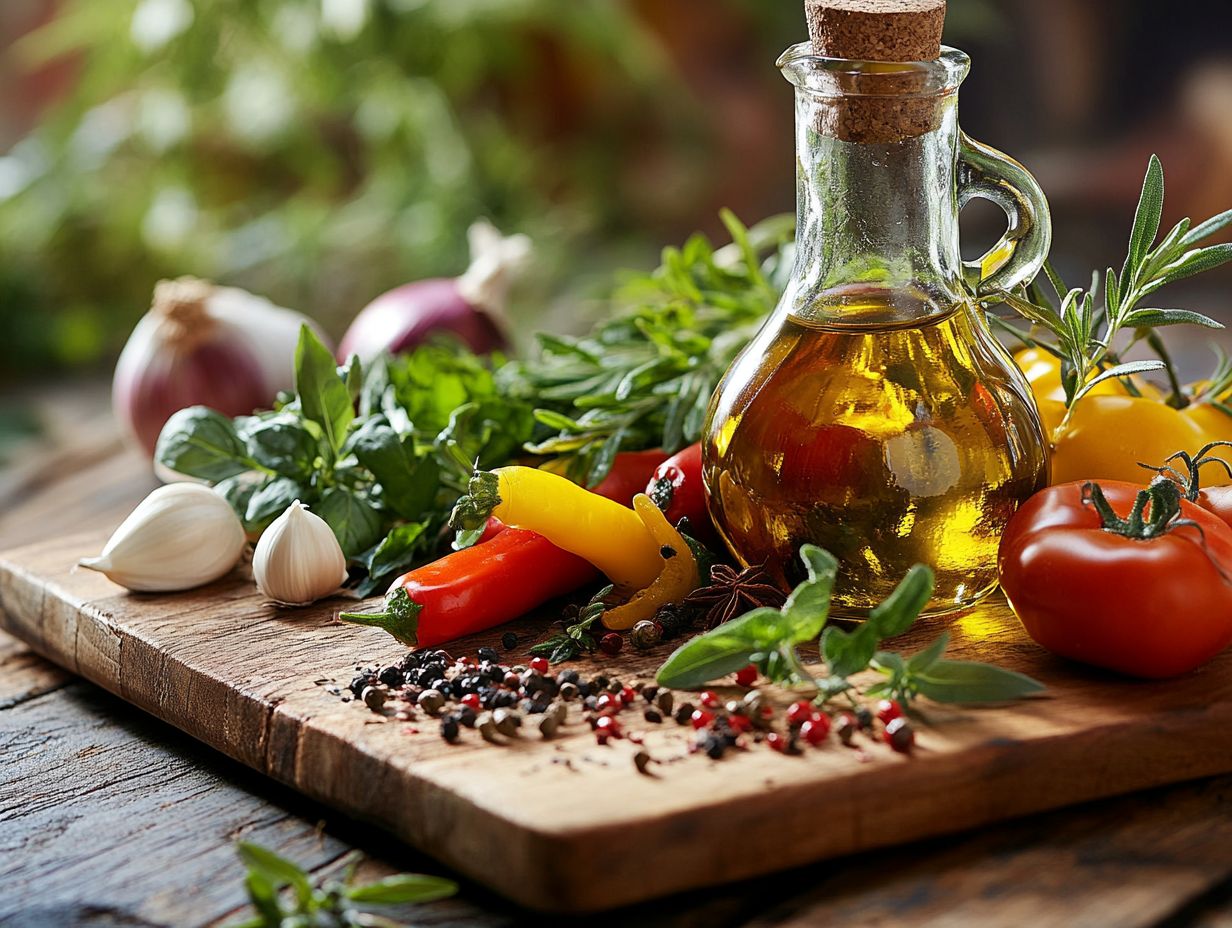
Experiment with roasting to enhance flavor.
Add vegetables to your favorite dishes, like pasta or stir-fry, to make them enjoyable.
Use various seasonings and spices to boost flavor.
1. Roast Them
Roasting vegetables brings out their natural flavors. Drizzle high-quality olive oil for perfect caramelization.
This method intensifies taste and reveals unique textures. Your roasted veggies can become the highlight of the meal, showcasing vibrant colors and healthy benefits.
For best results, preheat your oven to 425 F (220 C). Chop vegetables like carrots and Brussels sprouts into even sizes for better caramelization.
Roast for 20 to 30 minutes for a balance of tenderness and crispiness. As they cook, the natural sugars caramelize, creating a rich flavor.
Feel free to use garlic powder, smoked paprika, or fresh herbs like rosemary and thyme to enhance their sweetness. This method makes cooking fun and nutritious!
2. Add Cheese or Cream Sauce
Cheese or cream sauce can elevate the taste of your veggies. Options like parmesan or creamy pesto enhance flavors in spinach or kale.
A drizzle of alfredo can transform roasted broccoli into a comforting side dish. Feta crumbles add tanginess to garden salads bursting with freshness.
Combining cheddar cheese sauce with steamed cauliflower can add a playful twist. Making a simple cream sauce is easy: saut garlic in butter, stir in cream, and add grated cheese for a rich base.
With these ingredients, you can turn everyday vegetables into extraordinary delights.
3. Incorporate Them into Your Favorite Dishes
Mixing vegetables into your favorite meals boosts nutrition and flavor. Adding sweet potatoes to a hearty stew can create a colorful feast.
Bell peppers add crunch to fajitas, while zucchini can make baked goods moist. Broccoli florets in stir-fries provide a delightful crunch.
Experimenting with different combinations opens a world of creativity. These vibrant additions will impress even the pickiest eaters!
4. Use Different Seasonings and Spices
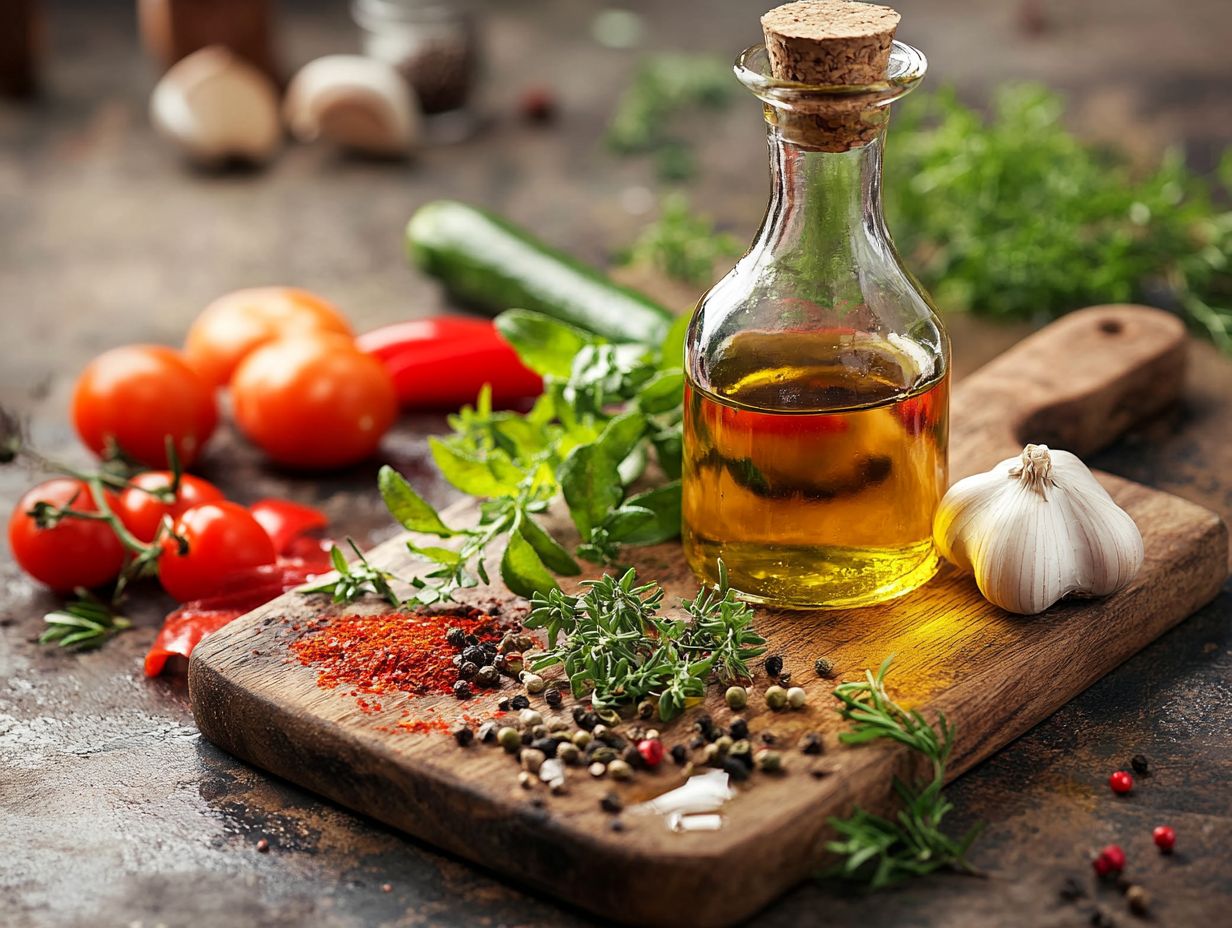
Using various seasonings and spices makes vegetables extraordinary. You’ll unlock flavors that cater to your taste.
Fresh herbs, spices, and a touch of monosodium glutamate (MSG), a flavor enhancer, can enhance the natural taste of vegetables. Get creative in the kitchen while keeping your meals healthy.
A sprinkle of smoked paprika can infuse roasted bell peppers with robust flavor. A dash of cumin can transform humble zucchini into something special.
When crafting Mediterranean dishes, combine oregano, basil, and garlic to beautifully complement vegetables like eggplant and tomatoes. This creates a harmonious blend that delights the senses.
Venturing into Asian cuisine? Use sesame oil, ginger, and soy sauce to elevate stir-fried greens. You’ll invite a vibrant explosion of taste.
A pinch of sugar can soften bitterness. A squeeze of lemon juice brightens up any vegetable dish, making every bite a celebration of flavor!
5. Try Different Cooking Methods
Exploring different cooking methods for vegetables can transform your meals. You ll introduce exciting textures and flavors that enhance health benefits while keeping things interesting.
Techniques like air frying, grilling, and steaming coax out the natural sweetness of vegetables such as kale and sweet potatoes, making them enjoyable.
Each method offers unique perks:
- Air frying creates a delightful crispy exterior without extra oil, giving you a healthier crunch.
- Grilling adds a smoky flavor that elevates even the simplest dishes.
- Steaming preserves nutrients and vibrant colors, making it ideal for quick, health-conscious sides.
Dive into these cooking techniques and discover new flavors! You ll find the best way to prepare each vegetable and uncover new favorite dishes.
Don t hesitate to mix things up your palate will thank you!
Why Is It Important to Eat Vegetables?
Eating a variety of vegetables is vital for your health and should be your top priority! They provide crucial nutrients that promote overall well-being, as emphasized by reputable organizations like the Centers for Disease Control and Prevention (CDC).
Incorporating vegetables into your diet significantly lowers your risk of chronic diseases, enhances digestion, and helps maintain a healthy weight. They are a critical component of any balanced diet.
Vegetables brim with essential vitamins and minerals, such as vitamin C, potassium, and folate, each playing a vital role in body function.
Research published in the Journal of Nutrition shows that a fiber-rich diet from vegetables can reduce heart disease risk by approximately 30%. Antioxidants in various vegetables combat oxidative stress, potentially lowering cancer risk.
Regularly consuming vegetables can uplift your mood and support cognitive function. This underscores their importance in fostering long-term health and well-being.
What Are Some Tips for Picking the Best Vegetables?
Choosing the best vegetables requires a keen eye for quality, freshness, and seasonal availability traits that local farmers markets often excel in.
Select vibrant, firm vegetables to elevate the taste of your dishes and maximize their nutritional value. This transforms your cooking experience into something enjoyable and healthful.
Prioritize organic options; they tend to be free from harmful pesticides and additives. Look for vegetables without blemishes and with crisp leaves clear indicators of their recent harvest.
Familiarizing yourself with seasonal varieties helps make selections that are both delicious and cost-effective.
Proper storage is essential. Keep vegetables in a cool, dark place to prolong their lifespan and maintain flavor. Store leafy greens in airtight containers and hard vegetables in a crisper drawer to keep your picks fresh for longer.
How Can Vegetables Be Prepared to Retain Their Nutritional Value?
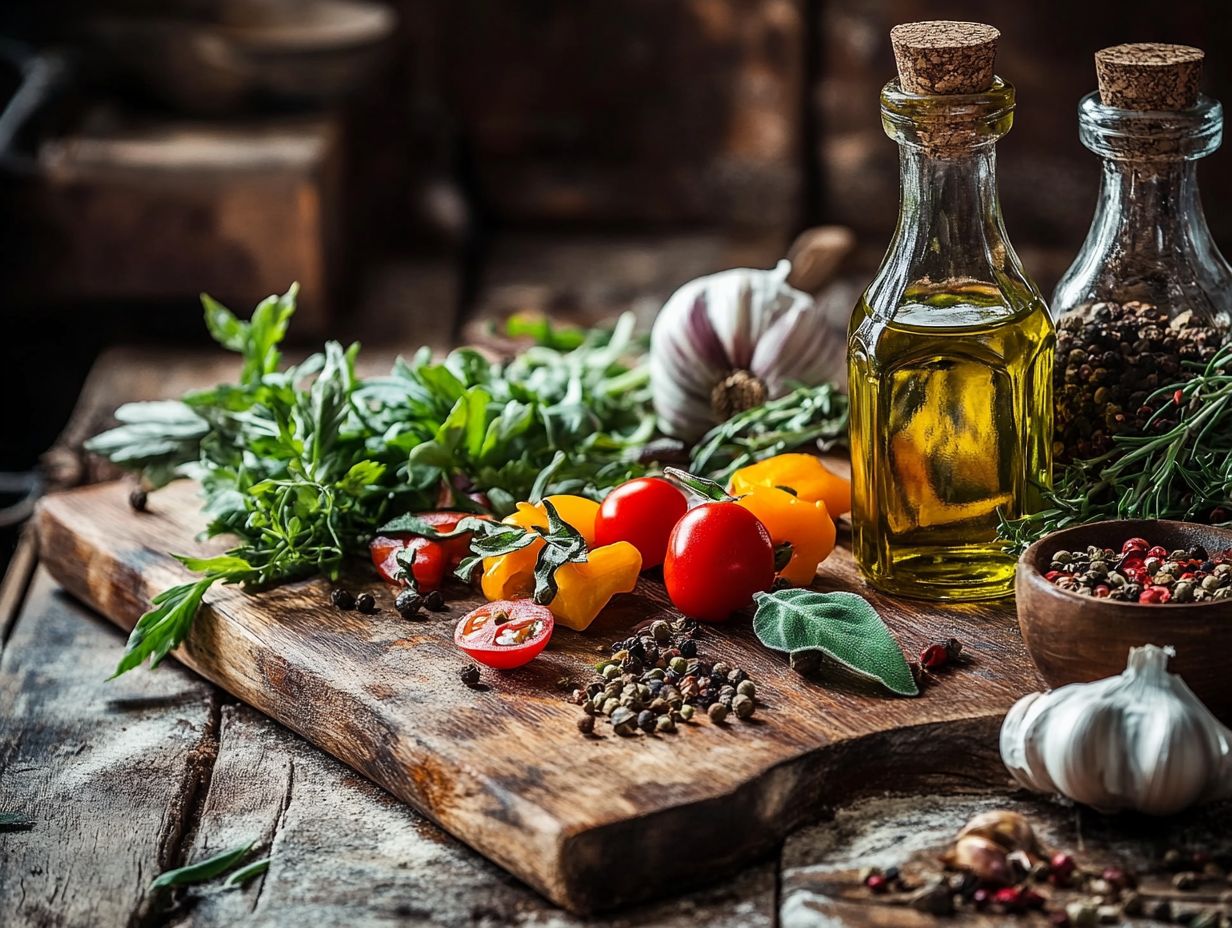
Retaining the nutritional value of vegetables during preparation is crucial for maximizing their health benefits. You can achieve this through a variety of cooking techniques.
Methods like steaming or quick frying not only preserve important nutrients but also enhance flavor. This makes your vegetable dishes both nourishing and delightful!
These techniques minimize exposure to heat and water, which can leach out important vitamins and minerals. For instance, steaming where vegetables are cooked quickly over boiling water retains more nutrients compared to boiling.
When you opt for stir-frying, you maintain a vibrant texture and flavor while locking in beneficial compounds. Cutting vegetables into larger pieces helps retain nutrients.
Embracing diverse cooking techniques maximizes the nutritional profile of your meals. It also keeps them exciting and packed with flavor.
What Are Some Common Mistakes People Make When Cooking Vegetables?
Many individuals encounter common pitfalls when cooking vegetables. These mistakes can undermine both their flavors and nutritional benefits.
Overcooking or over-seasoning can be detrimental. For instance, cooking vegetables at excessively high temperatures or for too long strips them of vibrant colors, appealing textures, and important vitamins.
Instead, gentle saut ing or steaming techniques allow you to preserve both flavor and nutrients. Achieving a harmonious blend of flavors is essential!
Incorporating a variety of herbs or a splash of acid, such as lemon juice, can elevate your dish and create a delightful balance. Textures matter too!
Combining crunchy and tender elements like roasted carrots paired with fresh arugula enhances visual appeal. It also makes for a more enjoyable dining experience.
How Can One Make Vegetables More Appealing to Children?
Making vegetables something kids love can feel challenging! But with creativity and delicious recipes, you can make them a beloved part of their diet.
Techniques like roasting or creating fun shapes can help kids see vegetables in a fresh, attractive way. Presenting veggies alongside appealing dips like hummus or yogurt-based sauces transforms mealtime into an exciting adventure.
Imagine adding vegetables to homemade pizzas, where they can hide cleverly between layers of cheese and favorite toppings, making them much more tempting. Get creative with colorful vegetable skewers!
Kids will love assembling their tasty creations. Incorporating fun recipes, like rainbow salads or blended smoothies, can spark their interest even further.
With these strategies, families can enjoy nutritious meals that kids simply cannot resist. Don’t miss out on making vegetables fun!
What Are Some Creative and Unique Ways to Incorporate Vegetables into Meals?
Incorporating vegetables into your meals can be an exciting adventure! Dive into creative and unique recipes that spark your culinary curiosity.
Imagine innovative salads featuring roasted kale or savory dishes that blend vegetables with rich sauces these techniques can truly elevate your dining experience.
Using spiralized zucchini as a substitute for pasta adds a refreshing twist to traditional recipes. Pureed butternut squash, blended until smooth, provides a creamy alternative in risottos.
Don’t overlook the joy of experimenting with Asian-inspired stir-fries that feature bok choy and snow peas. These add a delightful crunch to every bite!
Vegetables are incredibly versatile! You can find inspiration in global cuisines, crafting your unique dishes that not only tantalize your taste buds but also celebrate the vibrant colors and textures of seasonal produce.
Frequently Asked Questions
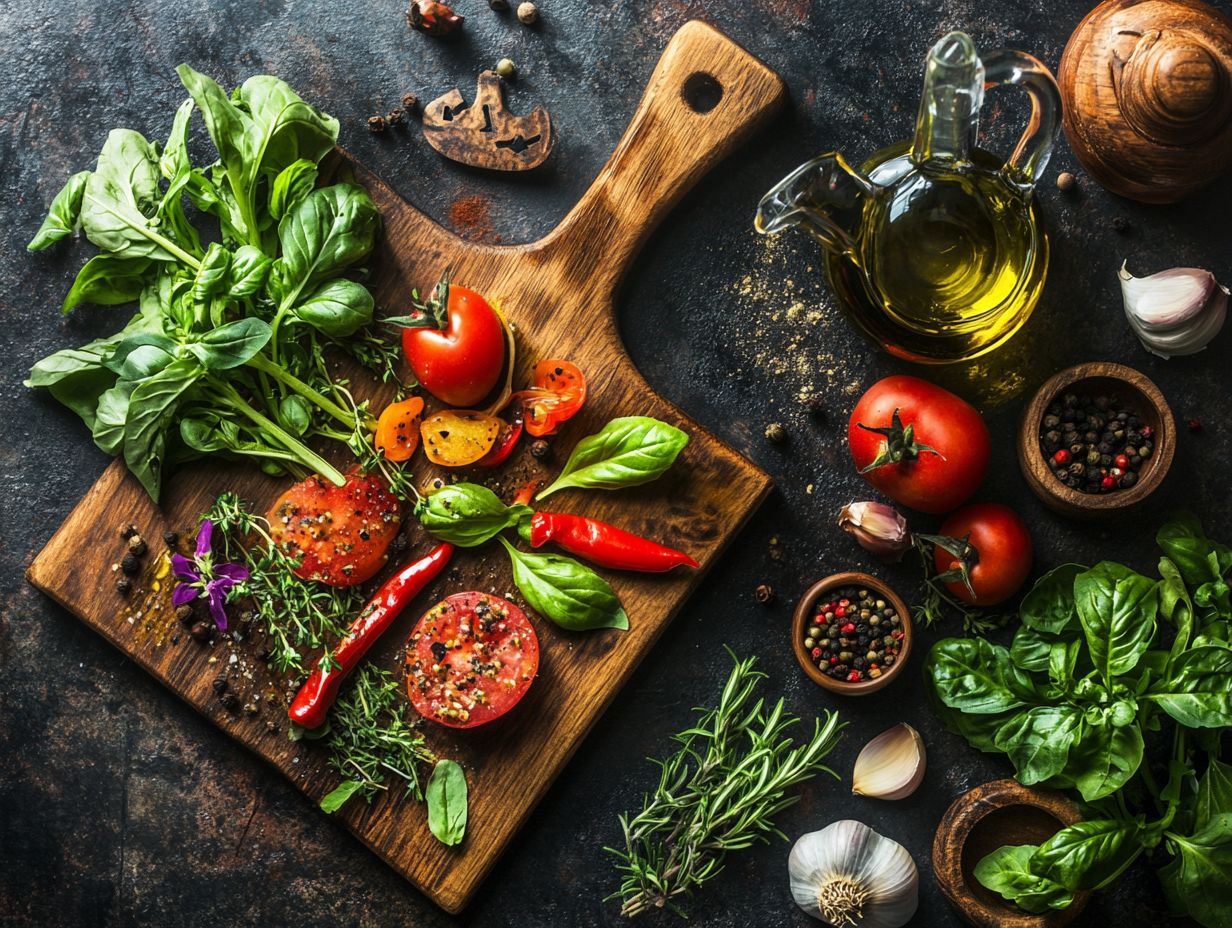
1. How can I make vegetables taste better without adding unhealthy toppings?
Incorporate herbs and spices. Fresh or dried herbs add flavor without extra calories.
2. Can roasting vegetables really make them taste better?
Yes, roasting enhances natural sweetness. This technique works particularly well with root vegetables like carrots, potatoes, and beets.
3. What about adding sauces or dressings to vegetables?
Sauces can add flavor but may be high in calories. Instead, try homemade dressings with olive oil, lemon juice, and herbs for a healthier option.
4. How can I make vegetables more appealing to picky eaters?
Incorporate vegetables into familiar dishes. For example, add diced veggies to pasta sauce or blend them into a smoothie.
5. What are some easy ways to add vegetables to my meals?
There are many ways to add vegetables. Saut them for omelettes, blend them into soups, or include them in stir-fries and casseroles.
6. Can I use different cooking methods to enhance the flavor of vegetables?
Absolutely! Different methods bring out unique flavors. Grilling adds smokiness, while steaming retains their taste and nutrients. Experiment to find your favorites.





